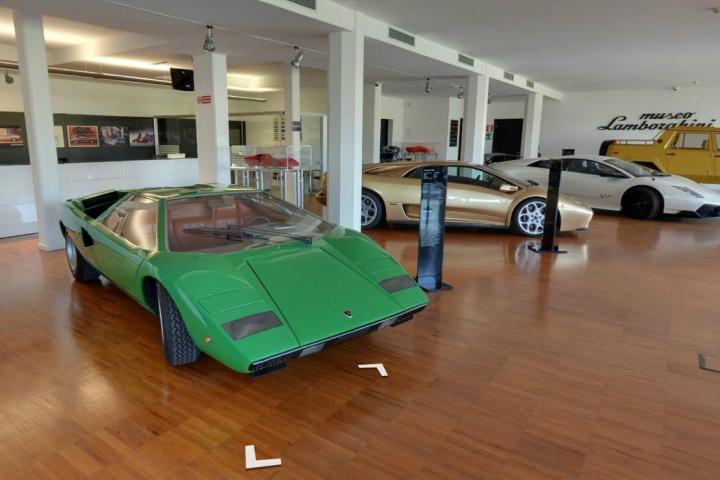
When I heard that Google’s Street View team had recently visited the Lamborghini Museum in Sant’Agata Bolognese in northern Italy, I rather enjoyed the image of one of its camera-laden Toyota Corollas squeezing into the packed display area, reversing this way and that, edging past cars worth hundreds of thousands of dollars while horrified museum staff winced with every maneuver, sweat pouring down their faces in nervous anxiety.

Truth be told, Google will of course have used something like its backpack-based Trekker camera to gather the panoramic imagery, thereby ensuring the luxury cars remained scratch- and dent-free.
Lamborghini fans can explore all 1500 square meters of the museum, with models such as the Miura, Countach, Diablo, and Murciélago all awaiting your inspection.
The Reventòn, which was limited to just 20 models, is also on display, as are various prototypes and one-off designs.
A neat touch is how you can climb behind the wheel of some of the motors – approach the driver’s side of the green Countach LP 400, for example, and its door flips up, with another click taking you inside.

The Lamborghini Museum opened in 2001 “as a sign of Automobili Lamborghini’s commitment to celebrate, with the new millennium, a new breed of dream cars,” according to the museum’s website.
The usual entrance fee is 13 euros ($17.50) – plus the cost of journeying to northern Italy – though thanks to Street View, you can stay firmly rooted to your sofa for your tour.
Google has been increasingly going off-road to capture imagery for Street View, with the interior of the world’s largest passenger plane, the top of the Eiffel Tower, Japan’s highest mountain and the Galapagos Islands all added to the service in the last year.


